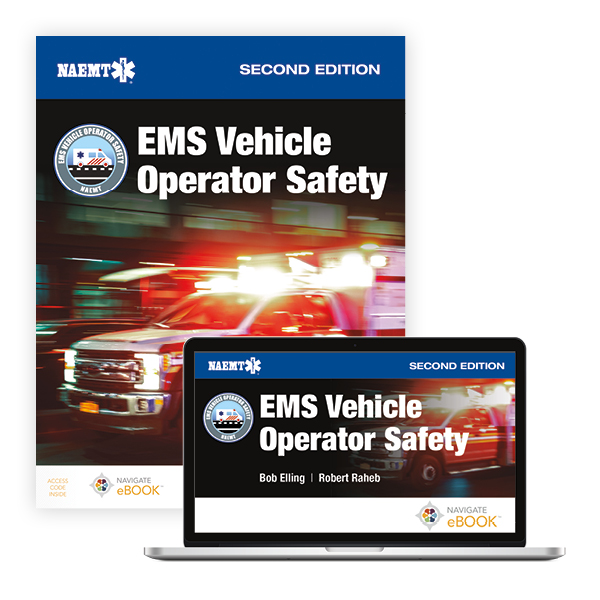Lights and Siren Use in EMS is Changing. Here's What You Need to Know

EMS instructors are taking a fresh look at the dangers of operating a vehicle with lights and siren. Research indicates that lights and siren usage creates a risk not only to the emergency medical professionals but also to the public and provides lifesaving benefit to the patient less than 5 percent of the time.
In February of 2022, 13 prominent EMS and firefighting leadership groups issued a joint position statement addressing the issue, which proposes several measures to reduce the unnecessary use of lights and sirens. The statement was followed by the Lights and Siren Collaborative, which supported 50 EMS agencies nationwide as they implemented new regulations for the use of lights and sirens.
EMS Vehicle Collisions Are an Ongoing Problem
The statement begins by citing fire and EMS crash, injury, and fatality statistics. For example:
- Between 1996 and 2012, there were 137 civilian fatalities and 228 civilian injuries from fire vehicle accidents.
- The same period saw 64 civilian fatalities and 217 civilian injuries in ambulance incidents.
- Approximately 97 EMS professionals were killed in ambulance accidents between 1993 and 2010.
- 7.7% of EMS practitioners have been involved in a crash while using lights and sirens, according to one survey.
- “Wake effect” collisions, those caused by vehicles with lights and sirens but not involving them, appear to be four times as common as crashes actually involving an EMS vehicl
The risk of lights and siren usage does not translate to a great reduction in patient transport time. The National Library of Medicine compiled data from several studies on the topic which shows that lights and siren usage reduces average response and transport times by only 42 seconds to an average of 3.8 minutes. The paper also says reduction in prehospital time produced a clinical difference in only about 5 percent of the cases. Some agencies have reduced lights and siren use by anywhere from one-fifth to one-third without a measurable impact on patient outcome.
New Guidelines on Lights and Siren Usage
The EMS system exists to save lives and improve patient outcomes by providing response, out-of-hospital health care, and transport. In rare cases, the decreased time with lights and sirens will make a difference. However, vehicles using lights and sirens can pose a risk to EMS professionals and the public that should not be dismissed.
FEMA released new guidance on the use of emergency vehicles' lights and sirens after a January 2024 National EMS Quality Alliance (NEMSQA) report. The report details the following guidelines for lights and siren use:
Conduct regular risk assessments by collecting data and evaluating the necessity of lights and sirens based on patient condition and urgency. EMS should focus on situations where time-sensitive interventions are required.
Develop Clear Policies and establish specific criteria for when lights and sirens should be used.
Provide training to EMS personnel on the risks associated with lights and siren use. Offer alternative strategies for safe and efficient response.
Limit the use of lights and sirens to high-priority calls through updated dispatch protocols.
Use computer-aided dispatch systems and data analytic tools to determine safe, evidence-based improvements.
Treat the use of lights and sirens as a clinical intervention with defined indications, contraindications, and potential adverse effects.
Collaborate with regulators to update performance-based contracts and response time requirements that incentivize unnecessary lights and siren use.
Keep the community informed about policy changes and their impacts.
EMS Vehicle Operator Safety
EMS Vehicle Operator Safety (EVOS) addresses the vehicle operations and transport safety knowledge gaps that lead to injury and death. Built on current research and featuring discussions of actual crashes and common driving scenarios—and the lessons that can be learned from them—it challenges emergency vehicle operators to consider if they truly know how to arrive at a scene safely.
Request Your Copy
Related Content:
- Author’s Opinion: Emergency Vehicle Operator Safety Training Needs Standardization
- Look Inside: EMS Vehicle Operator Safety (EVOS)
- Vehicle Rescue and Extrication: What You Need to Know
